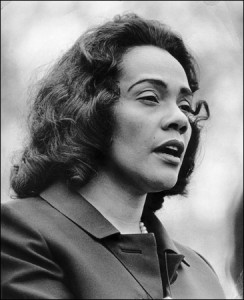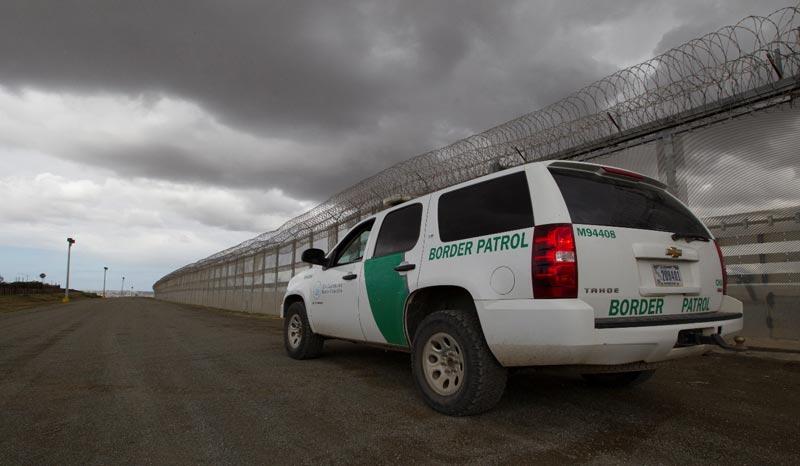(ThyBlackMan.com) The absence of any words or deeds of Coretta Scott King carved in the stone of the Dr. Martin Luther King Jr. Memorial left a fault line in our nation’s history.
The centerpiece of the monument on the National Mall is a towering 30-foot statue of Dr. King carved out of stone. It is a grandiose salute to a man who without an army, weapons, or a national treasury commanded a war so unlike that of Presidents George Washington and Abraham Lincoln who are enshrined in memorials nearby.
Dr. King commanded a spiritual army that helped liberate the heart and soul of America from its deepest hatred and molded it into a liberation movement for freedom and dignity that continues resounding around the world. 
The memorial is spectacularly significant; something for the entire world to see for generations to come. This grandeur makes the absence of any lasting tribute to Coretta Scott King, the person that did the most to carry forth Dr. King’s legacy, so compelling. If it were not for this woman by his side, his legacy would never have risen to such heroic proportions today.
Recognize her somewhere
Somewhere on that vast four acres, there should be a statue, a bust, a plaque or something showing that she was a co-partner in this great freedom movement. (She died on Jan. 30, 2006.) Why not a mention of her on the monument’s wall of great quotes? He once said, “In every campaign, if Coretta was not with me, she was only a heartbeat away.”
In fact, one of Coretta’s most cherished quotes symbolizes what kind of woman she was. Horace Mann, the founder of Antioch College, her alma mater, once said, “If you have not found a cause to die for, you have not found a reason to live.”
That statement was not mere words to her. She lived at a time when she virtually had to have the faith of a prophet and nerves of steel just to live each day.
During the 1956 Montgomery bus boycott, carloads of Ku Klux Klan drove through Black housing sections. The Kings received constant threatening calls. Then on January 30, 1956, she was in the house with her infant daughter Yolanda when the King’s house was bombed. “We could have been killed, but it was just not our time to die,” she told me. Despite the terrorism and the pleas of her parents to leave Montgomery she stayed with Martin until the 369-day boycott successfully ended.
“During the bus boycott, I was tested by fire and I came to understand that I was not a breakable crystal figurine,” she said. “If I had been fragile and fearful, this would have been too much a distraction for Martin. Certainly his concern for my safety and that of the children would have prevented him from staying focused on the movement, but he came to understand he could trust me with trouble. In Montgomery, I was tested and found I became stronger in a crisis.”
‘Married to the movement’
In 1968, the testing became heart-breaking. On April 4, Dr. King was gunned down in Memphis while campaigning for the rights of striking garbage workers. During the national upheaval and riots following the assassination, much of the nation was awed not only by the poise of Coretta King but also by her inner strength as she took her slain husband’s place and led the march.
“What most did not understand then was that I was not only married to the man I loved but I was also married to the movement that I loved,” she said.
In taped interviews, Mrs. King told me how after her husband’s death, her faith gave her the strength to raise her four children and to build a world-class center in Atlanta to continue the nonviolent work of Dr. King. This move brought her into a bitter contention with some of Dr. King’s chief aides who had their own agendas for self-promotion and tried unsuccessfully to push Mrs. King out of the way.
In Atlanta, she led a redevelopment effort of deteriorated neighborhoods that helped create the diversity that attracted the 1996 Summer Olympics. The Center, along with the King birth home and the gravesites at the Center – where both Kings are entombed – brings in thousands of tourists each year. It has helped Atlanta become the spiritual mecca of America, according to Steve Klein, communications director of the Center.
Lobbied Congress
Following the success of raising funds for the Center, Mrs. King started lobbying Congress for the King holiday bill. While only a sentence or a phrase is ever used to describe this effort, it took more than 15 years of hard-core organizing, the drive to collect six million signatures and lobbying from state to state, along with civil rights supporters in Congress and in the streets to pass the legislation to make Dr. King’s birthday a national holiday which was signed into law on Nov. 2, 1983.
At the same time she was working to institutionalize her husband’s legacy, Mrs. King also emerged as an incomparable human rights spokeswoman in her own right. “Where ever there was injustice, war, discrimination against women, gays and the disadvantaged, I did my best to show up and exert moral persuasion,” she explained.
MLK’s other half
As I started interviewing Mrs. King in the mid-1970s, it was clear that she did not see herself as an appendage or a footnote in history. She often emphasized that she was more than a wife during Dr. King’s life and more than a widow after his death. She once told me, “My story is a freedom song of struggle. It is about finding one’s purpose, how to overcome fear and to stand up for causes bigger than one’s self.”
Coretta King was the other half of the Martin Luther King, Jr. persona. They were two souls with one goal of giving their lives to create a Beloved Community where all people would have dignity and justice. Telling one story without the other creates a flaw and imbalance, a scar on history. It would be shameful for this not to be corrected.
Written By Dr. Barbara A. Reynolds




















Thanks Mrs. Reynolds for sharing your thoughts with us. It is a really moving article. Unfortunately, it happens too many times in human history that females’ contributions in many realms are overlooked.